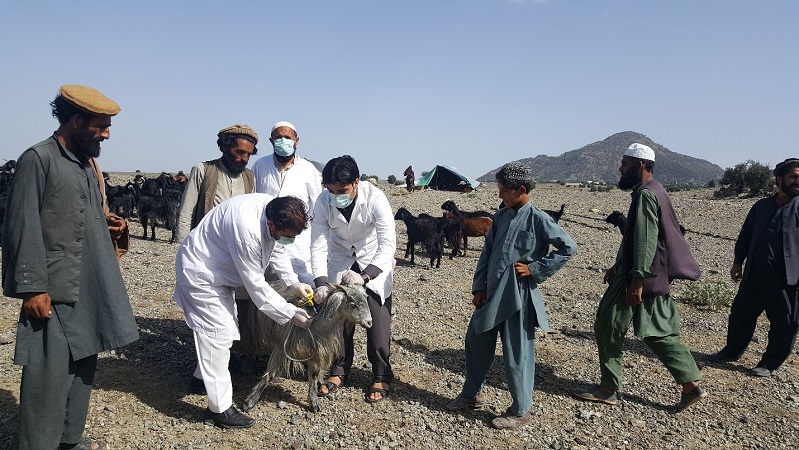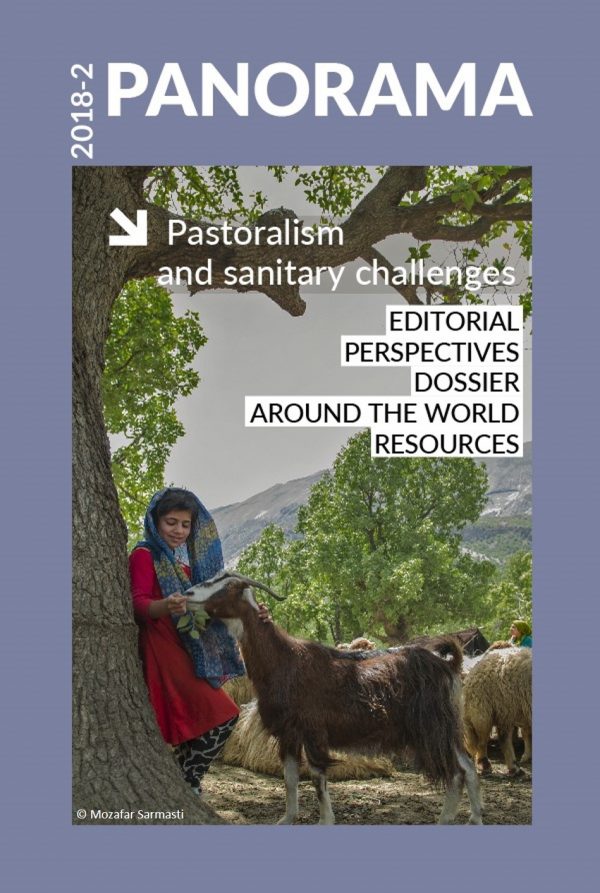Around the world Posted on 2019-11-26 18:46:54
Success stories
PPR control and eradication programme in Afghanistan
The role of veterinary para-professionals in successful implementation
Keywords
Authors
Raymond Briscoe (1)* & Jahangir Miakhail (2)
(1) Executive Director, Dutch Committee for Afghanistan (DCA) Livestock Programs, Kabul, Afghanistan
(2) Delegate to the OIE, Acting General Director, General Directorate of Animal Health and Production, Ministry of Agriculture, Irrigation, and Livestock, Kabul, Afghanistan
* Corresponding author: briscoe_raymond@yahoo.co.uk
The designations and denominations employed and the presentation of the material in this article do not imply the expression of any opinion whatsoever on the part of the OIE concerning the legal status of any country, territory, city or area or of its authorities, or concerning the delimitation of its frontiers and boundaries.
The views expressed in this article are solely the responsibility of the author(s). The mention of specific companies or products of manufacturers, whether or not these have been patented, does not imply that these have been endorsed or recommended by the OIE in preference to others of a similar nature that are not mentioned.
The majority of the country’s 30 million sheep and goats are owned by Kuchi nomadic pastoralists, and these livestock are their most important economic asset. Their migratory routes traverse vast areas of the countryside, with periodic stops at animal markets, summer pastures, and in settled villages during the winter. The Kuchi pastoralists were identified as the primary target group for the programme because their nomadic way of life and animal movements mean that the potential for infectious disease spread is high.
National control strategy
In 2015, the General Directorate of Animal Health and Production of the Ministry of Agriculture, Irrigation and Livestock (MAIL) initiated Afghanistan’s formal programme for PPR control and eradication. It did so in collaboration with FAO, the implementing organisation, funded by the Government of Japan. The programme was aligned with the OIE/FAO Global Strategy for the Control and Eradication of PPR (PPR–GCES), and the objective of the intervention was to take the country to Stage 2 of the GCES pathway.
In April 2016, at the Regional Roadmap meeting in Nepal, Afghanistan qualified as being in Stage 1, and was carrying out many Stage 1 and Stage 2 activities of the GCES progressive pathway.
After a successful pilot project in 2015, which targeted 270,000 small ruminants belonging to the Kuchi community in three provinces, the programme has continued to expand each year (Fig. 1).

In 2018, the total number of animals vaccinated since 2015 will reach 12.5 million sheep and goats, all belonging to the Kuchi community and throughout all 34 provinces of Afghanistan.
In addition to the targeted vaccination of animals, 3,004 serum samples (2015 to 2017) were collected pre- and post-vaccination, which were submitted to the Central Veterinary Diagnostic and Research Laboratory for testing and analysis, with another 3,000 samples planned to be taken in 2018.
Reporting disease outbreaks, as well as animal owner education(1) are also components of the overall strategy.
Programme implementation and the role of veterinary para-professionals
The ability to reach all livestock owners, including Kuchi pastoralists and their animals, is beyond the capacity of the limited number of university-trained veterinarians and government Veterinary Services. To fulfil this crucial need, a system of Veterinary Field Units (VFUs)(2) has been established throughout the country. VFUs are private-sector, service-delivery units at the community level, charging a fee per service.
VFUs, staffed by trained veterinary para-professionals (VPPs), locally referred to as ‘paravets’, have been the key to successfully implementing and administering Afghanistan’s National PPR Control Strategy, and the overall provision of clinical veterinary services. Para-veterinarian trainees are selected by their own communities, receive six months of in-depth practical training, and then establish their own, private, fee-for-service VFU back in their local community.
Afghanistan’s 1,000 paravets are licensed by MAIL and have disease-reporting responsibilities to MAIL, but receive their training and the majority of technical support from non-governmental organisations (NGOs)(3) working in Afghanistan’s animal health sector. The Dutch Committee for Afghanistan (DCA), an NGO that has been working in the livestock sector on animal health, production and welfare in Afghanistan for nearly 30 years, is recognised as the leading NGO in the field. DCA provides the majority of paravet training and VFU technical support, actively coordinates with MAIL programmes, and liaises with other stakeholders. With technical support from DCA, VPPs are contracted by the government to provide specified services(4), including vaccine administration, disease reporting, and sample collection and submission. Paravets have personal links to the villages and communities that they serve, as well as established relationships with settled and migratory Kuchi, and other animal owners. The VFU network is an excellent sustainable model of private-sector, veterinary clinical service delivery and has proven to be a reliable partner in public–private partnership with government Veterinary Services. That partnership has become an integral element in the continuing implementation of the national PPR control programme. VPPs and the VFU system are a valuable resource for MAIL, and for the effective delivery of veterinary care to Afghanistan’s livestock.
The pilot PPR programme was conducted through DCA alone but it was expanded from 2016 to 2018 through a group of NGOs led by DCA and their supported VPPs, via the VFUs, for the field delivery of activities, so as to achieve nationwide coverage.
________________________________________
(1) This involves structured sessions on different topics related to animal health and disease prevention. Specially prepared teaching materials, developed on a needs-based approach, are used
(2) 1,000 licensed by MAIL with approximately 800 active
(3) Such as the Aga Khan Foundation, the Mission to Support the Development of Rural Economies in Afghanistan (MADERA), Relief International. DCA is the lead organisation and currently supports 650 VFUs nationwide
(4) Under the Sanitary Mandate Contracting Scheme, the private sector performs certain public-sector functions under contract for payment
http://dx.doi.org/10.20506/bull.2018.2.2877












